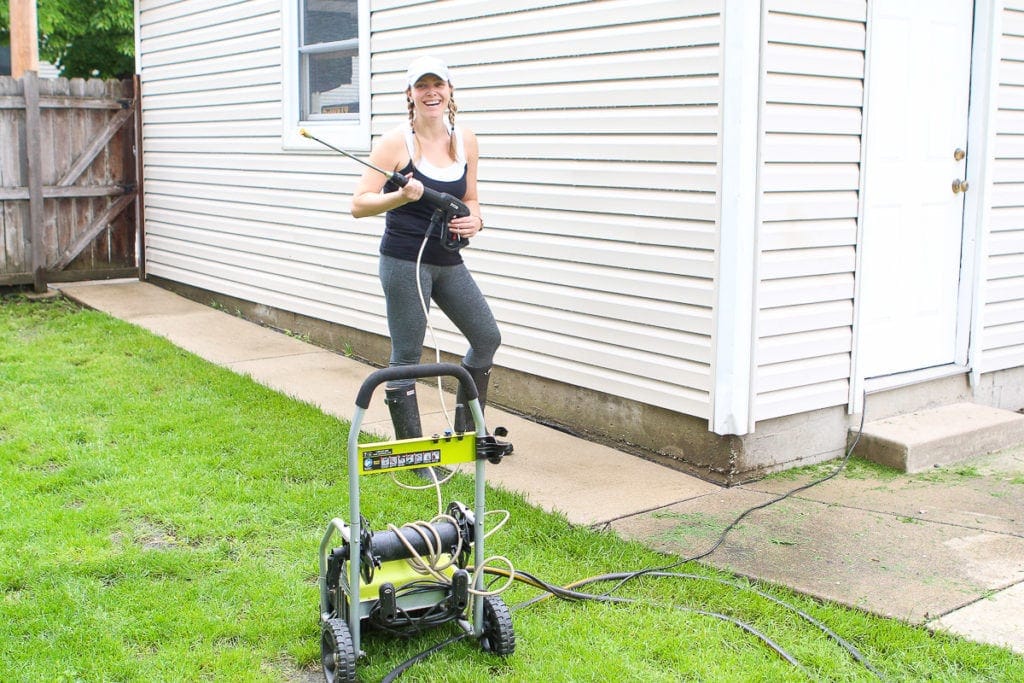
Pressure washers are powerful tools—but too much pressure in the wrong place can lead to cracked siding, stripped paint, or even shattered windows. 😱 On the flip side, too little pressure won’t get the job done. That’s why one of the most important questions homeowners and DIYers ask is:
“How do I choose the right PSI for different surfaces?”
Let’s break down what PSI actually means, how it affects cleaning power, and what levels are best for a wide range of surfaces—from concrete driveways to delicate wooden decks. 🧼🏡
🧠 What Is PSI?
PSI stands for Pounds per Square Inch—it’s the measurement of how much force the water is delivering. In short:
- Higher PSI = More Power 💥
- Lower PSI = Gentler Wash 🌊
But PSI is only half the story. GPM (gallons per minute) matters too, but we’ll focus on PSI here since that’s what most people see first when shopping for or renting a machine.
📊 General PSI Guidelines
Here’s a quick reference chart to guide your decisions:
| Surface | Recommended PSI |
|---|---|
| Soft woods (fences, decks) | 500–1200 PSI |
| Vinyl siding | 1300–1600 PSI |
| Painted surfaces | 1200–1900 PSI |
| Cars & vehicles | 1200–1900 PSI |
| Brick or stone | 2000–3000 PSI |
| Concrete driveways | 3000–4000 PSI |
| Metal (gutters, railings) | 1500–2500 PSI |
💡 Keep in mind: Always start with a lower PSI and gradually increase as needed. It’s easier to apply more pressure than to undo damage!
🪵 Delicate Surfaces (500–1200 PSI)
Examples:
- Wooden decks
- Fences
- Outdoor furniture
Use low pressure and wide spray tips (like a 40° white nozzle) to avoid gouging or stripping the wood. Clean along the grain of the wood and maintain a safe distance—12–24 inches is ideal.
🧽 Pro Tip: For really delicate surfaces, you might even want to consider soft washing instead of pressure washing.
Browse Amazon Here For Soft Washing Equipment And Accessories
🧱 Siding (1300–1600 PSI)
Examples:
- Vinyl siding
- Aluminum siding
- Stucco (be extra cautious)
Too much pressure can damage siding, force water behind panels, or peel paint. Stick with a medium setting and always aim downward to prevent water intrusion. A 25° green nozzle works well here. 🏡💧
Avoid pressure washing stucco unless you really know what you’re doing—it’s porous and prone to damage. A professional might be a better call in that case.
🚗 Vehicles & Painted Surfaces (1200–1900 PSI)
For cars, boats, or painted patio furniture, you want a balance of power and gentleness. High pressure can strip paint or damage clear coat finishes.
- Use a wide fan tip (40°)
- Stay at least 12 inches away
- Don’t spray directly into seams or electronics
🧼 Use soap formulated for vehicles and always rinse thoroughly.
🛣️ Concrete & Brick (2000–4000 PSI)
This is where you can crank it up. Concrete and brick are extremely durable—but you still want to avoid chipping or etching the surface.
- Use 15° or 25° nozzles
- Hold the wand 6–12 inches from the surface
- Move in a consistent back-and-forth motion
Tough oil or rust stains may also need a degreaser or specialized cleaner to assist the high PSI. 🔥
🧯 Metal & Gutters (1500–2500 PSI)
Metal railings, gutters, and garage doors can take moderate PSI—but be mindful of paint or powder coating. A 25° tip at about 1500 PSI is often enough to clean effectively without removing finish.
⚡ Always avoid electrical components or exposed wires. Cover outlets before you begin!
🎯 PSI Isn’t Everything
Remember, the spray tip (nozzle) and your distance from the surface also impact cleaning power. Even a high PSI machine can do gentle work with the right technique.
- Red (0°): Never use unless you’re targeting rust or graffiti on concrete
- Yellow (15°): Great for hard surfaces like brick or stone
- Green (25°): Good all-purpose tip
- White (40°): Gentle for siding or vehicles
- Black (Soap): For applying detergent only
🛑 Never use a zero-degree tip on siding, wood, or painted surfaces—it’s a recipe for damage.
🧠 Final Thoughts
Choosing the right PSI for your pressure washing task isn’t about going full blast every time—it’s about matching the power to the surface.
To recap:
- ✅ Lower PSI for wood, vehicles, and painted areas
- 🔧 Mid-range PSI for siding and metal
- 💪 High PSI for concrete, brick, and stone
- 🚫 Always test a small area before going full-speed
With the right PSI and technique, you’ll clean faster, safer, and more effectively—without risking damage to your home. 🏠💦
Browse Amazon Here For Popular Pressure Washers And Accessories






